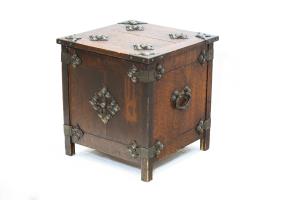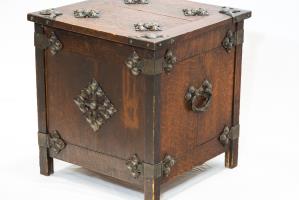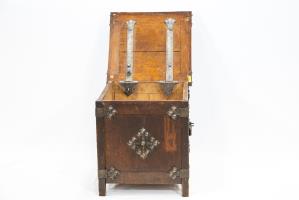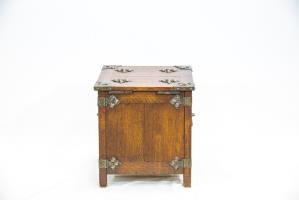O-2224 • box (coal)
Specifications
| Artists | Paul Beau (craftsman) • Paul Beau and the team of the ornamental wrought iron shop (maker) |
|---|---|
| Date | 1923 |
| Materials | wood, oak • metal, wrought iron |
| Dimensions (cm) | 45.5 (Length) • 45.5 (Width) • 51.5 (Height) |
| Functions | Temperature control device |
| Barcode | 604245 |




Paul Beau
Paul Beau (1871–1949) of Montreal was a master metal worker associated with Canada’s Arts and Crafts movement. The movement emerged in Britain in response to the factory production of decorative items and gained popularity in urban centres across the Empire from the 1890s through the 1920s. Because of the emphasis it puts on handcrafted elements and traditional materials, the Arts and Crafts style was especially compatible with the Gothic Revival architecture of the Parliament buildings.
Beau supervised a wrought iron workshop on the grounds of Parliament from 1920 through 1926, where he and his team of artisans produced decorative metalwork for the newly opened Centre Block. Their handiwork is visible throughout the building in the form of fireplace accessories, light fixtures, gates, and railings—even certain door hinges. Beau also created the ornate calendar stand, inkstand and seal press placed on the Clerk’s Table in the House of Commons, combining metals of contrasting colours, a technique that is characteristic of his work.